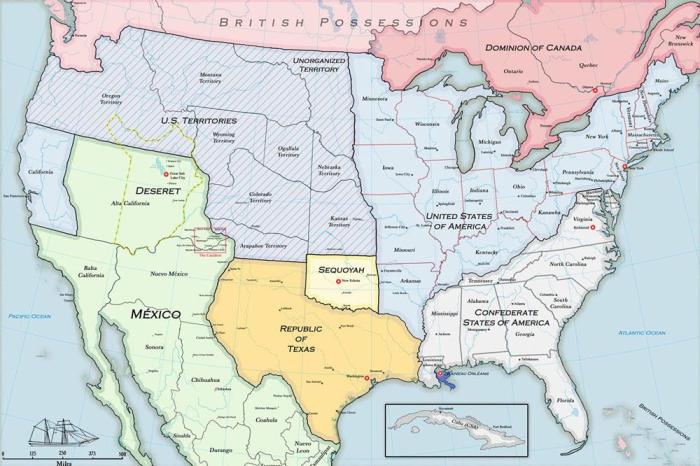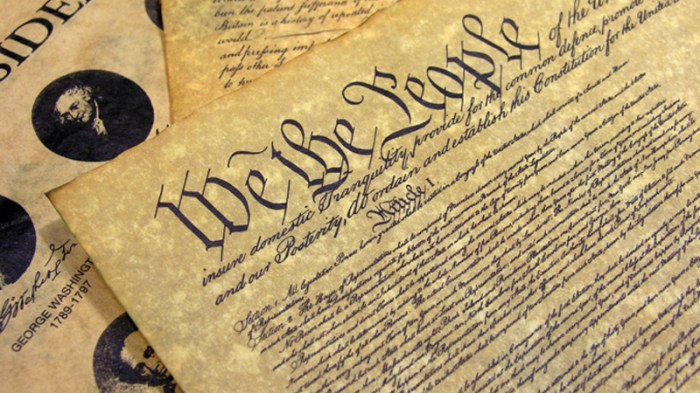The History of the Americas Textbook provides a comprehensive overview of the region’s rich and diverse past, present, and future. This textbook offers a comprehensive exploration of the Americas, from its earliest civilizations to its contemporary challenges and opportunities.
The narrative unfolds in a compelling and distinctive manner, drawing readers into a story that promises to be both engaging and uniquely memorable. This textbook is an essential resource for students, educators, and anyone interested in gaining a deeper understanding of the Americas.
Historical Context

The Americas hold a pivotal place in world history, showcasing the development of diverse civilizations and the profound impact of European exploration and colonization.
Prior to European arrival, the Americas were home to a multitude of thriving civilizations and cultures, each with unique societal structures, artistic traditions, and technological advancements. These included the Maya, Inca, Aztec, and many others, who left behind enduring legacies in architecture, astronomy, mathematics, and art.
Impact of European Exploration and Colonization
The arrival of European explorers in the Americas in the 15th century marked a turning point in the region’s history. European powers, driven by a desire for wealth and resources, established colonies and engaged in extensive trade, exploration, and exploitation.
- Political and Economic Changes:European colonization led to the establishment of new political and economic systems, often at the expense of indigenous populations. Native American lands were seized, and forced labor and resource extraction became widespread.
- Cultural and Social Transformations:European colonization brought significant cultural and social changes to the Americas. European languages, religions, and customs were imposed upon indigenous populations, leading to a complex process of cultural assimilation and resistance.
- Demographic Shifts:The arrival of European settlers and the introduction of diseases from Europe had a devastating impact on indigenous populations. Widespread epidemics and displacement led to a dramatic decline in the number of Native Americans.
- Environmental Consequences:European colonization had profound environmental consequences. The introduction of non-native species, deforestation, and the exploitation of natural resources led to significant ecological changes throughout the Americas.
Indigenous Perspectives
Indigenous peoples of the Americas have a rich and diverse history, contributing significantly to the cultural, social, and environmental landscapes of the continent. From the Arctic to the southern tip of South America, indigenous communities have developed unique languages, traditions, and knowledge systems that have shaped the history of the Americas.
Challenges and Triumphs
Indigenous communities have faced numerous challenges throughout history, including colonization, assimilation, and displacement. Despite these challenges, they have persevered and maintained their cultural identities. Indigenous peoples have also played a crucial role in shaping the political and economic landscape of the Americas, advocating for their rights and contributing to the development of modern societies.
Importance of Preserving Indigenous Knowledge
Indigenous knowledge and traditions hold immense value for the preservation of biodiversity, environmental sustainability, and cultural diversity. Indigenous communities possess a deep understanding of their local environments and have developed sustainable practices for land stewardship and resource management. Preserving and respecting indigenous knowledge is essential for fostering sustainable development and promoting cultural understanding.
Colonial Era

The Colonial Era in the Americas marked a period of significant transformation, as European powers established colonies across the vast continents. This era brought about profound changes to the political, social, economic, and cultural landscapes of the Americas, leaving lasting legacies that continue to shape the region today.
The establishment of European colonies in the Americas began in the late 15th century, with the arrival of Spanish explorers in the Caribbean. Over the following centuries, other European powers, including Portugal, England, France, and the Netherlands, joined the race for colonial expansion in the Americas.
Each colonial power brought its own unique political, economic, and cultural practices to the colonies it established, leading to a diverse tapestry of colonial experiences.
Establishment and Development of European Colonies
The establishment of European colonies in the Americas was a complex and multifaceted process that involved exploration, conquest, and settlement. European explorers, driven by a thirst for wealth, adventure, and religious zeal, ventured into the unknown waters of the Atlantic Ocean, seeking new lands and riches.
As they encountered the indigenous populations of the Americas, they established trading posts and settlements, gradually expanding their control over vast territories.
The development of European colonies in the Americas was shaped by a variety of factors, including the availability of natural resources, the indigenous populations, and the political and economic policies of the colonizing powers. Some colonies, such as those established by Spain in Mexico and Peru, were primarily focused on the extraction of precious metals and other resources.
Others, such as the English colonies in North America, were primarily focused on agriculture and the establishment of permanent settlements.
Comparison of Colonial Powers and Governance, History of the americas textbook
The different European colonial powers that established colonies in the Americas had distinct approaches to governance and administration. The Spanish Empire, for example, established a highly centralized and bureaucratic system of government, with a strong emphasis on royal authority and control.
The English colonies, on the other hand, were characterized by a greater degree of local autonomy and self-government, with representative assemblies playing a significant role in decision-making.
The different approaches to governance had a profound impact on the development of the colonies. Spanish colonies tended to be more tightly controlled and exploited by the imperial authorities, while English colonies enjoyed greater freedom and opportunity for economic growth and social development.
Social, Economic, and Cultural Consequences of Colonialism
The establishment of European colonies in the Americas had a profound impact on the social, economic, and cultural development of the region. The introduction of European diseases, technologies, and ideas led to significant changes in the indigenous populations and their way of life.
The forced labor of indigenous peoples and the transatlantic slave trade resulted in the displacement and exploitation of millions of people.
Economically, the colonies played a crucial role in the development of the global economy, providing raw materials and markets for European goods. The plantation system, based on the forced labor of enslaved Africans, became the dominant economic model in many colonies, leading to the accumulation of vast wealth for European merchants and landowners.
Culturally, the colonial era witnessed a complex process of cultural exchange and assimilation. European languages, religions, and customs were imposed on indigenous populations, leading to the emergence of new cultural identities and the suppression of traditional practices.
Revolutions and Independence Movements

The late 18th and early 19th centuries witnessed a wave of revolutions and independence movements that transformed the political landscape of the Americas. These movements were driven by a complex interplay of factors, including Enlightenment ideals, economic grievances, and a growing sense of national identity.
One of the most significant revolutions was the American Revolution (1775-1783), which resulted in the independence of the United States from British rule. The American Revolution was sparked by a series of grievances against British policies, including taxation without representation, the quartering of British troops, and restrictions on trade.
Key figures in the revolution included George Washington, Thomas Jefferson, and Benjamin Franklin, who articulated the principles of liberty, equality, and self-government.
Key Figures and Ideas
The American Revolution and other independence movements in the Americas were shaped by a number of key figures and ideas. These included:
- Thomas Paine:Paine’s pamphlet Common Sense(1776) argued for American independence and became a bestseller throughout the colonies.
- Simon Bolivar:Bolivar was a Venezuelan military leader who played a key role in the independence of Venezuela, Colombia, Ecuador, Peru, and Bolivia. He is known as the “Liberator” of South America.
- Toussaint L’Ouverture:L’Ouverture was a Haitian revolutionary who led the Haitian Revolution (1791-1804), which resulted in the independence of Haiti from French rule.
The ideas that inspired these revolutions included the Enlightenment principles of liberty, equality, and self-government. These ideas were spread through pamphlets, newspapers, and other forms of communication, and they helped to create a sense of common purpose among the colonists.
Impact of Independence
The independence movements in the Americas had a profound impact on the development of the region. They led to the creation of new nations, the spread of democratic ideals, and the abolition of slavery. The revolutions also helped to shape the cultural and economic development of the Americas, and they continue to inspire movements for freedom and self-determination around the world.
Nation Building and Expansion

The aftermath of independence movements in the Americas ushered in an era of nation building and territorial expansion. Newly independent nations grappled with the challenges of establishing stable governments, fostering economic growth, and defining their national identities.
Challenges of Nation Building
The path to nation building was fraught with obstacles. Political instability, ethnic tensions, and economic disparities plagued many nations. Establishing effective governance structures, maintaining law and order, and ensuring equitable distribution of resources proved to be daunting tasks.
Immigration and Westward Expansion
Immigration played a significant role in shaping the Americas. Waves of immigrants from Europe, Asia, and Africa brought diverse cultures, skills, and perspectives to the region. Westward expansion, particularly in North America, led to the displacement of indigenous populations and the acquisition of vast new territories.
These demographic shifts had profound social, economic, and political implications.
Successes of Nation Building
Despite the challenges, many nations in the Americas achieved remarkable progress in nation building. They established constitutional governments, promoted economic development, and fostered a sense of national unity. The development of infrastructure, education systems, and healthcare institutions contributed to improving the lives of citizens.
Role of Immigration and Westward Expansion
Immigration and westward expansion had a transformative impact on the Americas. They contributed to population growth, economic development, and cultural diversity. However, these processes also raised issues of assimilation, integration, and the rights of indigenous populations.
Conclusion
The post-independence era in the Americas was characterized by nation building and territorial expansion. While challenges persisted, many nations achieved significant progress in establishing stable and prosperous societies. Immigration and westward expansion played pivotal roles in shaping the region’s demographic, economic, and cultural landscapes.
Social and Cultural Developments

The Americas have witnessed a multitude of social and cultural movements that have profoundly shaped the region’s identity. These movements have been driven by a complex interplay of factors, including industrialization, urbanization, technological advancements, and the evolution of cultural identities.
Industrialization and Urbanization
The Industrial Revolution, which began in the 18th century, had a transformative impact on American societies. The rise of factories and mass production led to a shift from rural to urban areas, creating densely populated cities and new social challenges.
- Urbanization led to the emergence of slums and poverty, as well as social problems such as crime and disease.
- Industrialization also brought about the rise of labor unions and social movements aimed at improving working conditions and workers’ rights.
Technological Advancements
Technological advancements have played a pivotal role in shaping American culture and society.
- The invention of the telegraph, telephone, and radio facilitated communication and the spread of ideas.
- The development of transportation technologies, such as railroads and automobiles, connected different regions and fostered economic growth.
Evolution of Cultural Identities
The Americas have been a melting pot of cultures, with people from different backgrounds and ethnicities interacting and shaping each other’s identities.
- The arrival of European settlers led to the displacement and assimilation of indigenous populations.
- The African slave trade brought a significant African influence to the Americas, which is reflected in cultural practices, music, and language.
Artistic Expressions
The Americas have produced a rich and diverse range of artistic expressions that reflect the region’s cultural heritage and social experiences.
- Literature, painting, and music have been influenced by indigenous, European, and African traditions.
- The development of modern art movements, such as abstract expressionism, has its roots in the Americas.
Contemporary Issues: History Of The Americas Textbook

The Americas face a complex array of contemporary challenges and opportunities. Globalization, economic integration, and environmental sustainability profoundly shape the region’s future.Globalization has interconnected the Americas, facilitating trade, investment, and cultural exchange. However, it has also created challenges such as income inequality, job displacement, and the erosion of local cultures.
Economic integration through regional trade agreements has boosted economic growth but also raised concerns about labor exploitation and environmental degradation.Environmental sustainability is a critical issue in the Americas, with climate change posing significant threats to ecosystems, coastal communities, and human health.
The region’s rich biodiversity and natural resources face challenges from deforestation, pollution, and unsustainable agricultural practices.
Globalization and Economic Integration
Globalization has had a significant impact on the Americas, both economically and socially. Increased trade and investment have led to economic growth and job creation in many countries, but have also contributed to income inequality and the loss of traditional industries.
Economic integration through regional trade agreements, such as the North American Free Trade Agreement (NAFTA) and the Southern Common Market (Mercosur), has further boosted trade and investment, but has also raised concerns about labor exploitation and environmental degradation.
Environmental Sustainability
Environmental sustainability is a major challenge facing the Americas. The region is home to a vast array of ecosystems, including rainforests, deserts, and mountains, but these ecosystems are under threat from climate change, deforestation, pollution, and unsustainable agricultural practices. Climate change is already having a significant impact on the Americas, causing sea levels to rise, glaciers to melt, and extreme weather events to become more frequent and severe.
Future Prospects and Potential Trajectories
The future of the Americas is uncertain, but it is clear that the region will continue to face a complex array of challenges and opportunities. Globalization, economic integration, and environmental sustainability will continue to be major factors shaping the region’s development.
The Americas have the potential to become a prosperous and sustainable region, but this will require addressing the challenges and seizing the opportunities that lie ahead.
Commonly Asked Questions
What is the significance of the Americas in world history?
The Americas have played a pivotal role in world history, serving as a crucible for the development of diverse civilizations, cultures, and ideas. From the ancient Maya and Inca civilizations to the European colonization and the subsequent independence movements, the Americas have been a舞台 for some of the most transformative events in human history.
What are some of the key challenges facing the Americas today?
The Americas face a range of challenges today, including economic inequality, social injustice, environmental degradation, and political instability. These challenges require collective action and innovative solutions to ensure a sustainable and prosperous future for the region.